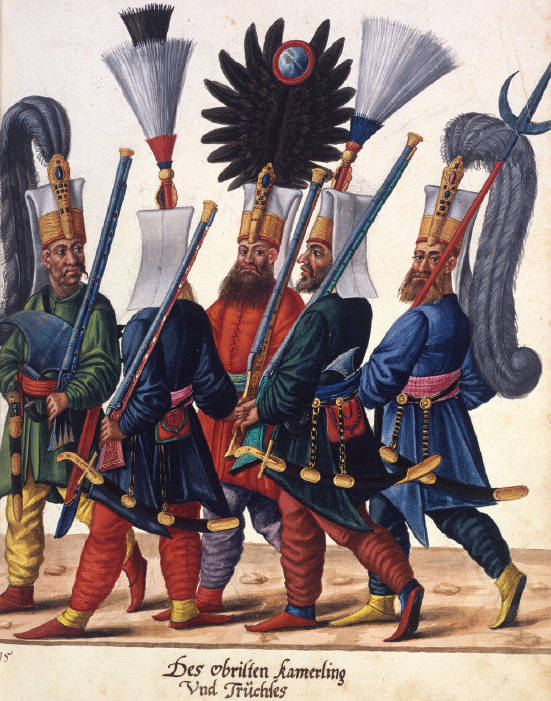In the Islamic Heartland: The Ottoman and Safavid Empires
The most impressive and enduring of the new Islamic states was the Ottoman Empire, which lasted in one form or another from the fourteenth to the early twentieth century. It was the creation of one of the many Turkic warrior groups that had earlier migrated into Anatolia. By the mid-fifteenth century, these Ottoman Turks had already carved out a state that encompassed much of the Anatolian peninsula and had pushed deep into southeastern Europe (the Balkans), acquiring in the process a substantial Christian population. In the two centuries that followed, the Ottoman Empire extended its control to much of the Middle East, coastal North Africa, the lands surrounding the Black Sea, and even farther into Eastern Europe.
The Ottoman Empire was a state of enormous significance in the world of the fifteenth century and beyond. In its huge territory, long duration, incorporation of many diverse peoples, and economic and cultural sophistication, it was one of the great empires of world history. In the fifteenth century, only Ming dynasty China and the Incas matched it in terms of wealth, power, and splendor. The empire represented the emergence of the Turks as the dominant people of the Islamic world, ruling now over many Arabs, who had initiated this new faith more than 800 years before. In adding “caliph” (successor to the Prophet) to their other titles, Ottoman sultans claimed the legacy of the earlier Abbasid Empire. They sought to bring a renewed unity to the Islamic world, while also serving as protector of the faith, the “strong sword of Islam.”

The Ottoman Empire also represented a new phase in the long encounter between Christendom and the world of Islam. In the Crusades, Europeans had taken the aggressive initiative in that encounter, but the rise of the Ottoman Empire reversed their roles. The seizure of Constantinople in 1453 marked the final demise of Christian Byzantium and allowed Ottoman rulers to see themselves as successors to the Roman Empire. In 1529, a rapidly expanding Ottoman Empire laid siege to Vienna in the heart of Central Europe. The political and military expansion of Islam, at the expense of Christendom, seemed clearly under way. Many Europeans spoke fearfully of the “terror of the Turk.”
In the neighboring Persian lands to the east of the Ottoman Empire, another Islamic state was also taking shape in the late fifteenth and early sixteenth centuries—the Safavid (SAH-fah-vihd) Empire. Its leadership was also Turkic, but in this case it had emerged from a Sufi religious order founded several centuries earlier by Safi al-Din (1252–1334). The long-term significance of the Safavid Empire, which was established in the decade following 1500, was its decision to forcibly impose a Shia version of Islam as the official religion of the state. Over time, this form of Islam gained popular support and came to define the unique identity of Persian (Iranian) culture.
This Shia empire also introduced a sharp divide into the political and religious life of heartland Islam, for almost all of Persia’s neighbors practiced a Sunni form of the faith. For a century (1534–1639), periodic military conflict erupted between the Ottoman and Safavid empires, reflecting both territorial rivalry and sharp religious differences. In 1514, the Ottoman sultan wrote to the Safavid ruler in the most bitter of terms:
You have denied the sanctity of divine law . . . you have deserted the path of salvation and the sacred commandments . . . you have opened to Muslims the gates of tyranny and oppression . . . you have raised the standard of irreligion and heresy. . . . [Therefore] the ulama and our doctors have pronounced a sentence of death against you, perjurer and blasphemer.9
This Sunni/Shia hostility has continued to divide the Islamic world into the twenty-first century.